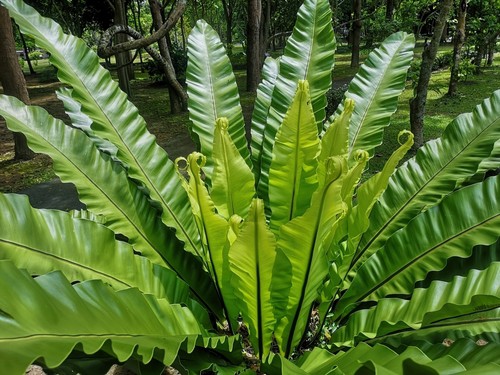Bird’s Nest Fern is a popular houseplant that is known for its beautiful, lush green foliage. However, if you notice your Bird’s nest fern leaves turning yellow it could be an indication of a problem.
Yellow leaves are a common issue that many plant owners face, and it is important to understand the causes and treatments to ensure that your plant stays healthy.
Yellow leaves on a Bird’s Nest Fern can be a sign of several issues, including overwatering, lack of light, or environmental stress. If the plant is overwatered, the roots may become waterlogged, leading to root rot, which can cause the leaves to turn yellow.
On the other hand, if the plant is not getting enough light, the leaves may turn yellow and become pale. Understanding the causes of yellow leaves is the first step in treating the issue and ensuring that your Bird’s Nest Fern stays healthy.
To address the issue of yellow leaves on a Bird’s Nest Fern, it is essential to examine the lighting conditions, watering practices, temperature, and humidity levels, soil and fertilizer, and potential pests and diseases.
Once you have identified the cause of the yellow leaves, you can take steps to treat and prevent the issue from recurring. With proper care and maintenance, your Bird’s Nest Fern can continue to thrive and add beauty to your home.
Key Takeaways
- Yellow leaves on a Bird’s Nest Fern can be a sign of overwatering, lack of light, or environmental stress.
- To address the issue, examine lighting conditions, watering practices, temperature, and humidity levels, soil and fertilizer, and potential pests and diseases.
- With proper care and maintenance, your Bird’s Nest Fern can continue to thrive and add beauty to your home.
See these other top posts in this category:
- Bird of Paradise Leaves Turning Yellow and Brown:
- Beet Leaves Turning Yellow:
- Arrowhead Plant Turning Yellow
Understanding Bird’s Nest Fern
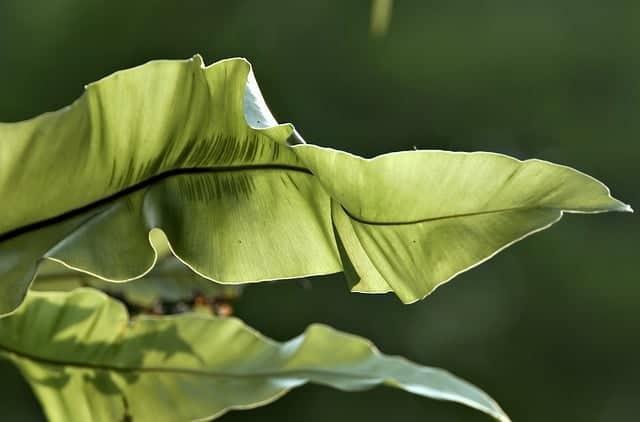
Bird’s Nest Fern, scientifically known as Asplenium nidus, is a popular houseplant known for its striking appearance and ease of care. It is a type of fern that is native to tropical regions of Asia, Australia, and Polynesia.
The leaves of the Bird’s Nest Fern grow in a rosette pattern, forming a bowl-like shape that resembles a bird’s nest, hence the name. The leaves are long, broad, and glossy, with a wavy edge that adds to their decorative value.
Bird’s Nest Fern is a low-maintenance plant that requires minimal care. It thrives in bright, indirect light and prefers a well-draining potting mix that retains moisture. Overwatering can cause the leaves to turn yellow, so it is important to water the plant only when the top inch of soil is dry.
One of the most common reasons why Bird’s Nest Fern leaves turn yellow is due to lack of light. When the plant does not receive enough light, the leaves lose their green color and turn yellow. It is important to place the plant in an area that receives bright, indirect light for most of the day.
Another reason why Bird’s Nest Fern leaves turn yellow is due to environmental stress. Factors such as temperature fluctuations, dry air, and pests can cause the leaves to turn yellow. It is important to keep the plant in a stable environment and monitor it for any signs of stress.
Recognizing Yellow Leaves
Yellowing leaves on a bird’s nest fern can be a sign of an underlying problem. It is important to recognize the symptoms of yellowing leaves to address the issue and prevent further damage to the plant.
Yellow leaves are one of the most common signs of overwatering. When the plant receives too much water, the roots can become waterlogged, and the leaves can turn yellow and wilt. However, yellow leaves can also be a sign of underwatering, as the plant will try to conserve water by shedding leaves.
Another cause of yellowing leaves is a lack of sunlight. Bird’s Nest Ferns prefer bright, indirect light, and if they do not receive enough light, the leaves can turn yellow and become weak.
It is important to note that some yellowing of leaves is a natural part of the plant’s aging process. As the leaves get older, they may turn yellow and die, which is normal. It is important to differentiate between normal aging and abnormal yellowing of leaves.
To recognize yellow leaves, look for leaves that are yellow, pale, or discolored. The leaves may also be wilted or have a soft texture. If the yellowing is caused by overwatering, the leaves may feel heavy and waterlogged. If the yellowing is caused by underwatering, the leaves may feel dry and brittle.
Lighting Conditions
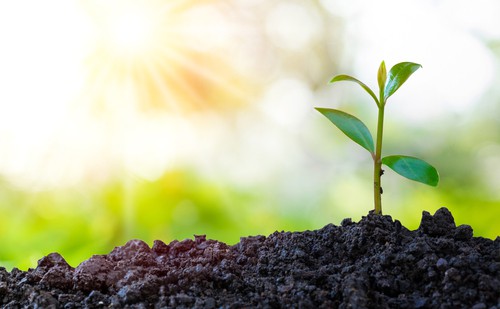
Bird’s Nest Ferns require a specific amount of light to thrive. They prefer bright, indirect light, and can tolerate low light conditions. However, they are sensitive to direct sunlight, which can cause yellowing of the leaves.
If the plant is receiving too much light, the leaves will turn yellow and may even become scorched. This can happen when the plant is placed in direct sunlight or in an area with insufficient shade. On the other hand, if the plant is not receiving enough light, the leaves will also turn yellow.
To ensure proper lighting conditions, it is recommended to place the Bird’s Nest Fern in a location with bright, indirect light. If the plant is placed near a window, it is important to filter the light using a sheer curtain or window shade. This will prevent direct sunlight from reaching the plant and causing damage to the leaves.
It is also important to note that the light requirements of the Bird’s Nest Fern may vary depending on the climate and season. In areas with high temperatures and strong sunlight, the plant may require more shade to prevent leaf damage. Conversely, in areas with low light conditions, the plant may require additional light sources such as grow lights.
Watering Practices
Proper watering is crucial in keeping a bird’s nest fern healthy. Overwatering and underwatering can both cause the leaves to turn yellow and eventually die.
To avoid overwatering, it is important to make sure that the potting medium drains freely and only provides enough water to keep the plant moist, but not soggy. Never allow any excess standing water in its container since soggy conditions can cause root rot. It is recommended to water the plant when the top inch of soil is dry to the touch.
On the other hand, lack of water can also cause the leaves to turn yellow and eventually die. Make sure to water the plant thoroughly and evenly, allowing the water to penetrate the soil and reach the roots.
Using a moisture meter can be helpful in determining the moisture level of the soil. It is recommended to use a moisture meter if one is unsure about how much moisture is good for the plant. The meter can tell the user how damp the soil is and if it’s time for water.
It is important to establish a regular watering schedule that works best for the plant. The frequency of watering will depend on various factors such as the size of the pot, the type of soil, and the humidity level of the environment.
Temperature and Humidity
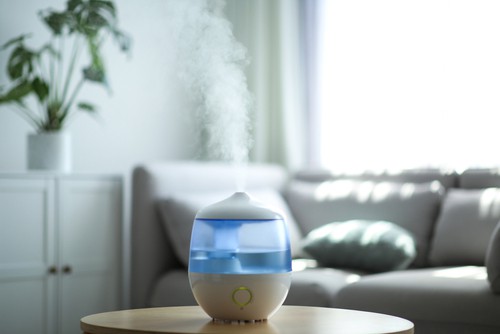
Bird’s nest ferns are native to tropical rainforests and thrive in warm, humid conditions. Therefore, maintaining a suitable temperature and humidity level is crucial to keep the plant healthy.
The ideal temperature range for bird’s nest ferns is between 70 to 80 degrees Fahrenheit. Temperatures below 60 degrees F should be avoided as they can harm the plant. Extreme temperatures can cause the leaves to turn yellow and eventually die.
In addition to temperature, humidity is also a critical factor in the growth of bird’s nest ferns. The ideal indoor humidity level should be around 50 percent or higher. If the humidity level is too low, the leaves may turn yellow and dry out.
To maintain the ideal humidity level, it is recommended to place a humidifier near the plant or use a pebble tray filled with water. This will help to increase the humidity level and keep the plant healthy.
It is also important to avoid placing the plant near air conditioning or heating vents, as this can cause a sudden change in temperature and humidity levels.
Soil and Fertilizer
Bird’s Nest Ferns require well-draining soil that is rich in organic matter. The soil should be kept consistently moist, but not waterlogged. Overwatering can lead to root rot, which can cause the leaves to turn yellow.
It is recommended to use a potting mix that is specifically formulated for ferns. This type of soil is designed to provide adequate drainage and moisture retention.
Fertilizing your Bird’s Nest Fern is essential to maintain healthy growth and prevent yellowing of the leaves. The best time to feed your plant is during the growing season, which is typically from spring to fall.
Nitrogen is a crucial nutrient for ferns, and it is recommended to use a fertilizer that is high in nitrogen. It is important not to over-fertilize, as this can lead to salt buildup in the soil, which can be harmful to the plant.
One way to ensure that your Bird’s Nest Fern is getting the right amount of nutrients is to use a slow-release fertilizer. These types of fertilizers release nutrients over an extended period, which can help prevent over-fertilization.
Another option is to use a liquid fertilizer, which can be applied directly to the soil or sprayed onto the leaves. It is important to follow the manufacturer’s instructions when using any type of fertilizer.
Pests and Diseases
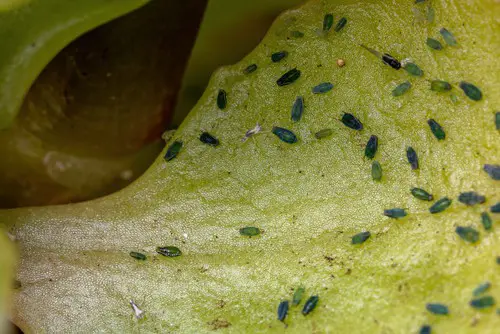
Bird’s Nest Ferns are generally hardy plants, but they are still susceptible to pests and diseases. Here are some of the most common issues that can cause the leaves of a Bird’s Nest Fern to turn yellow.
Pests
Mealybugs, scale insects, and aphids are common pests that can infest Bird’s Nest Ferns. These pests feed on the plant’s sap, which can cause the leaves to turn yellow and eventually die. If you notice any signs of pest infestation, such as sticky residue or webbing, it is important to take action immediately to prevent the infestation from spreading.
Spider mites are another common pest that can infest Bird’s Nest Ferns. These tiny arachnids are difficult to see with the naked eye, but their presence can be detected by the light specks left behind from their feeding, known as stippling, and their thin webs. Underwatered houseplants are especially susceptible to spider mites.
Diseases
Fungal infection, bacterial blight, and leaf spot disease are common diseases that can affect Bird’s Nest Ferns. These diseases can cause the leaves to turn yellow and eventually die.
The best way to prevent these diseases is to keep the plant healthy and avoid overwatering. If you notice any signs of disease, such as spots on the leaves or a foul odor, it is important to take action immediately to prevent the disease from spreading.
Nematodes are another type of pest that can cause problems for Bird’s Nest Ferns. Foliar nematodes can cause yellowing of the leaves, while root-knot nematodes can cause root rot and yellowing of the leaves. If you suspect a nematode infestation, it is important to take action immediately to prevent the infestation from spreading.
Treatment and Prevention
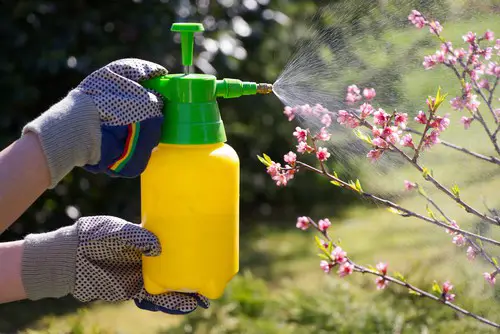
If a bird’s nest fern is turning yellow, it’s important to take action to prevent further damage to the plant. Here are some steps that can be taken to treat and prevent yellowing leaves:
- Check for overwatering: Overwatering is one of the most common causes of yellowing leaves in bird’s nest ferns. To prevent overwatering, make sure the potting medium drains freely and only provides enough water to keep the plant moist, but not soggy. Never allow any excess standing water in its container since soggy conditions can cause root rot.
- Trim yellow leaves: If the yellowing is limited to a few leaves, it’s best to trim them off to prevent the spread of the problem. Use clean, sharp scissors to snip off the yellow leaves at their base.
- Apply neem oil: If the yellowing is due to pests such as spider mites or scale insects, apply neem oil to the plant. Neem oil is a natural insecticide that can help control pests and prevent further damage to the plant.
- Check for nutrient deficiency: If the soil is lacking in nutrients, the plant may start to yellow. To fix this problem, apply a balanced fertilizer to the soil.
- Control humidity levels: Bird’s nest ferns thrive in high humidity levels. If the air is too dry, the leaves may start to yellow. To increase humidity levels, consider placing a tray of water near the plant or using a humidifier.
- Revive the plant: If the plant is severely damaged and has lost many of its leaves, it may be difficult to revive it. However, with the right care, it’s possible to bring the plant back to health. Make sure the plant is getting the right amount of light, water, and nutrients.
By following these steps, it’s possible to treat and prevent yellowing leaves in bird’s nest ferns. With the right care, these beautiful plants can thrive and add a touch of greenery to any space.
Care and Maintenance
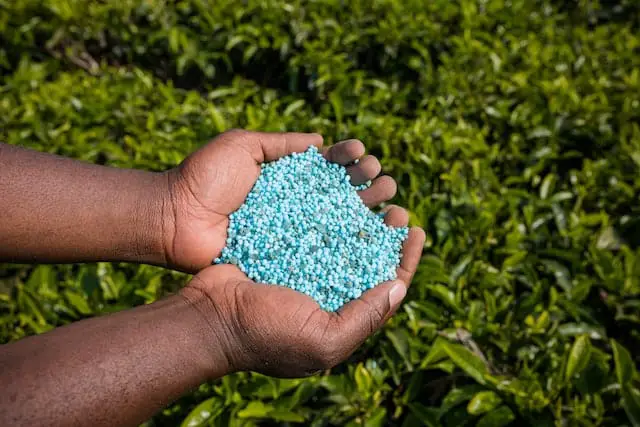
Bird’s Nest Fern is a low-maintenance plant that can add vibrant foliage to any indoor space. However, it requires consistent moisture and proper care to thrive. Here are some care and maintenance tips to keep your Bird’s Nest Fern healthy and vibrant:
- Watering: Overwatering or underwatering can cause the Bird’s Nest Fern leaves to turn yellow. To avoid this, make sure to water the plant regularly, keeping the soil moist but not soggy. Water the plant when the top inch of soil feels dry to the touch. Ensure that the pot has drainage holes to prevent water from accumulating at the bottom of the pot.
- Humidity: Bird’s Nest Ferns thrive in high humidity environments. To provide the required humidity, mist the foliage regularly, especially during the dry winter months. You can also place a tray of water near the plant to increase the humidity level around the plant.
- Fertilization: Fertilize the Bird’s Nest Fern once a month during the growing season (spring and summer) with a balanced houseplant fertilizer. Do not fertilize during the dormant season (fall and winter).
- Light: Bird’s Nest Ferns prefer indirect light, as direct sunlight can damage the leaves. Place the plant near a window that receives bright, filtered light.
- Pruning: Trim off any yellow or brown fronds to encourage new growth. Cutting off the yellow leaf tips can also help prevent further yellowing.
- Crown: The crown of the Bird’s Nest Fern should remain above the soil level. If the crown is buried, it can lead to rot and yellowing of the leaves.
- Soil: Use a well-draining potting mix that retains moisture but does not become waterlogged. A mix of peat moss, perlite, and vermiculite is ideal for Bird’s Nest Ferns.
By following these care and maintenance tips, you can keep your Bird’s Nest Fern healthy and vibrant, with lush green foliage and no yellowing.
Signs of Trouble
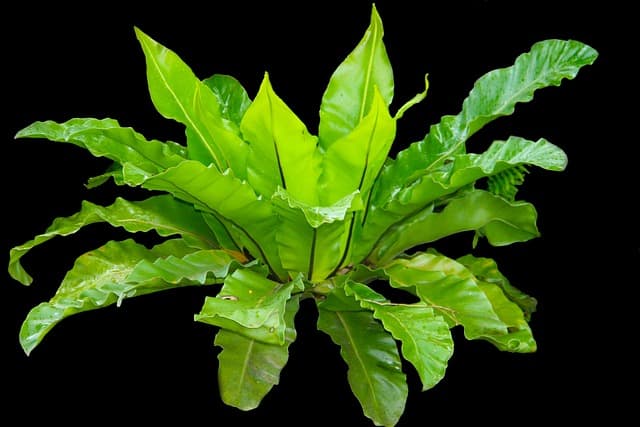
Bird’s nest ferns are generally easy to care for, but if the leaves start turning yellow, it’s a sign that something is wrong. Yellowing leaves can be a sign of a variety of issues. Here are some common signs of trouble to look out for:
1. Brown and Wilting Leaves
If the leaves of a bird’s nest fern are turning brown and wilting, it could be a sign of underwatering or overwatering. Check the soil to see if it is dry or waterlogged. Adjust the watering schedule accordingly.
2. Brown Spots with Purple Halos
Brown spots with purple halos on the leaves of a bird’s nest fern could be a sign of a fungal infection. This can be caused by overwatering or poor air circulation. Remove the affected leaves and improve the plant’s growing conditions.
3. Rotten Core
If the center of the plant is turning brown and mushy, it could be a sign of a rotten core. This is caused by overwatering or poor drainage. Remove the affected leaves and adjust the watering schedule.
4. Leaf Discoloration
Yellowing or browning of the leaves can be a sign of nutrient deficiency or pest infestation. Check the soil pH and nutrient levels. Look for signs of pests like spider mites or mealybugs.
5. Shadier Spot
If the bird’s nest fern is placed in a shadier spot than it is used to, it can cause the leaves to turn yellow. Move the plant to a brighter location, but avoid direct sunlight.
Frequently Asked Questions
Why are my bird’s nest fern leaves turning yellow?
Yellowing leaves on a bird’s nest fern can be caused by a variety of factors. The most common reasons are overwatering, lack of light, and environmental stress. Overwatering can lead to root rot, which can cause the leaves to turn yellow.
Lack of light can also cause yellowing leaves, as the plant needs moderate to bright indirect light to thrive. Environmental stress, such as extreme temperatures or drafts, can also cause yellowing leaves.
How do I fix yellowing leaves on my bird’s nest fern?
To fix yellowing leaves on a bird’s nest fern, it is important to identify the underlying cause. If the plant is overwatered, it is important to reduce watering and ensure that the soil is well-draining.
If the plant is not receiving enough light, it may need to be moved to a brighter location. If the plant is experiencing environmental stress, it may need to be moved to a more stable location. In some cases, it may be necessary to prune the yellowing leaves to encourage new growth.
What are some common problems with bird’s nest ferns?
Some common problems with bird’s nest ferns include overwatering, lack of light, pests, and disease. Overwatering can lead to root rot, while lack of light can cause yellowing leaves. Pests such as spider mites and mealybugs can also infest the plant, causing damage to the leaves. Diseases such as fungal infections can also affect the plant’s health.
How do I know if my bird’s nest fern is overwatered?
If a bird’s nest fern is overwatered, the leaves may turn yellow and wilt. The soil may also be excessively wet, and the plant may have a foul odor. In severe cases, the plant may also develop root rot, which can cause the roots to turn brown and mushy.
What are the water requirements for a bird’s nest fern?
Bird’s nest ferns prefer consistently moist soil, but they should not be overwatered. The soil should be allowed to dry slightly between waterings, but it should never be allowed to dry out completely. It is important to ensure that the soil is well-draining to prevent water from accumulating in the roots.
How can I tell if my bird’s nest fern has root rot?
If a bird’s nest fern has root rot, the roots will appear brown and mushy. The plant may also have a foul odor, and the leaves may turn yellow and wilt. In severe cases, the plant may die. To prevent root rot, it is important to ensure that the soil is well-draining and that the plant is not overwatered.

Hey, I’m Lisa and I’ve been an avid gardener for over 30 years. I love writing, talking and living in the garden! Feel free to connect with me on my socials below

